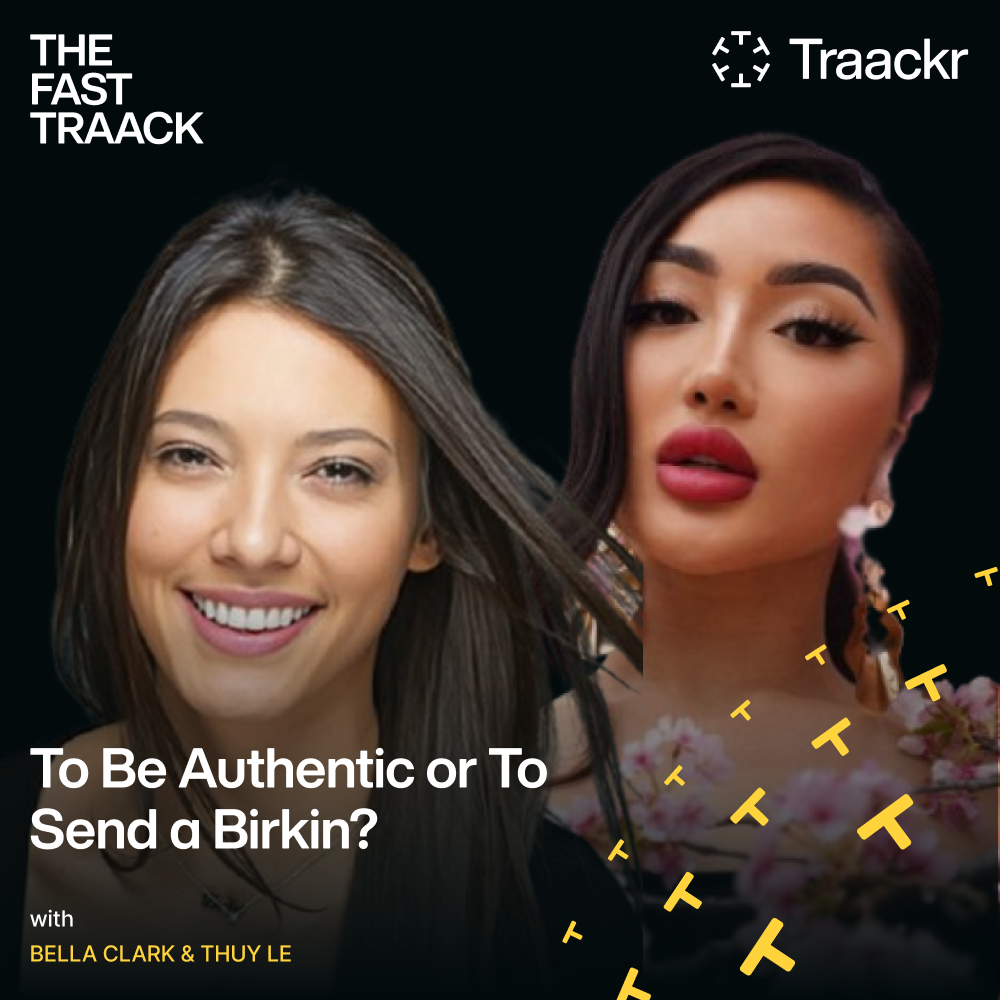Influencer Marketing Strategy: Negotiating with Influencers

You’ve created the brief, sent out the perfect influencer outreach email, and now your potential influencer partner is asking how much budget you have for your campaign.
Your palms start to sweat. Do you lay out all of your cards on the table or ask for their rates? How do you make sure you're getting a return on investment and also paying the influencer fairly?
Whether we like it or not, a big part of developing an efficient influencer marketing strategy relies on negotiating with influencers. Just like in the corporate world, it’s often inadvisable to take the first offer or proposal. This article will guide you through how to negotiate with influencers that leave both parties happy.
Influencer Marketing Strategy: Negotiating with Influencers
How much should you pay each influencer?
It’s risky to go into a conversation with a budget that is not backed by data. A few data points that you can quickly grab from any social platform include
- Follower size: Based on the tier of influencer, you can get a ballpark of where your number should start off at. See more below!
- Average engagement rate: Take the engagements of 10-15 posts and find the average. Compare organic versus paid posts. Although this is a manual process, it’s helpful to know if their audience is truly engaged.
- Comments: Qualitative data is just as important as quantitative data. If an influencer’s comment section is popping off with positive comments, this is a good sign that they would be a strong partner.
If you need a jumping-off point, the standard Instagram influencer rate (according to Influencer Marketing Hub) is as follows:
- Nano influencers (1000 - 10,000 followers): $10 - $100 per post
- Micro-influencers (10,000 - 50,000 followers): $100 - $500 per post
- Mid-tier influencers (50,000 - 500,000 followers): $500 - $5,000 per post
- Macro influencers (500,000 - 1,000,000 followers): $5000 - $10,000 per post
- Mega influencers (1,000,000+ followers): $10,000+ per post
However, this type of data can be limiting and may not give you a full understanding of the influencer’s potential impact!
Use Data To Refine Your Negotiation Strategy
Only relying on bias or vanity metrics (like follower count) can lead you to over or undervalue an influencer. If you have an influencer marketing platform, utilize past influencer performance data to answer these questions:
- How has the influencer’s organic versus paid content performed?
- How has the influencer’s photo content performed vs their video content?
- How well has the influencer’s content performed with your brand or similar brands?
This data allows you to establish goals and baselines on spend efficiency metrics like cost per impression (CPI), cost per engagement (CPE), and cost per view (CPV).
Knowing how much an influencer is going to cost per impression, engagement or video view gives you the ability to allocate the appropriate budget and negotiate proper compensation.
Pro Tip: Traackr provides a budget calculator based on a combination of followers, engagement, past performance, and more to recommend compensation for sponsored and organic content. Having this type of tool can help save you time (and many headaches)!

Along with past performance data, it’s equally as important to look at an influencer’s audience data. You want to ensure that you are partnering with an influencer that has the highest likelihood of reaching your target audience. A few key data points* to look at include:
- Audience’s Location: This is key if your products are limited to shipping to specific countries or cities.
- Audience’s Income: This is key if you’re a luxury brand and want to ensure an influencer’s audience can afford your product or service.
- Audience’s Gender: This is key if you know your target audience skews towards a certain gender.
- Family status: This is key if you’re specifically targeting parents or single-family households.
- Occupation: This is key if your product or service caters to a certain industry (nurses, real estate agents, ect.)
This type of audience data is key when you are thinking through your budget and negotiation strategies. If only half of an influencer’s followers hit your target demographic, should you try to negotiate a lower fee? Or should you look for a different influencer to partner with, even if they have a slightly higher fee?
Bonus tip: You’ll also want to do more of a qualitative search to see if your influencer will support your brand’s image. Do they share the same values as your brand? Does their previous content have positive feedback from their audience (check the comments!)? You want to see that the creator is fostering a community with their audience and will respect your brand when promoting your product or service.
*Disclaimer: Be aware of the possibility of data biases. For example, BIPOC influencers by and large do not have the same amount of historical performance data as their white counterparts. Use these 3 methods to help combat data biases:
- Understand the context
- Use multiple layers of data
- Get feedback from your target audience - if your audience says they want to see a certain type of influencer, even if their data shows lower performance, do it!
How to negotiate with influencers
Now that you have concrete data backing up your budget, it’s time to work on the conversation you are going to have with your partner. Here are a few negotiation best practices to add to your influencer marketing strategy.
Approach this as a partnership
“Make sure there’s a back-and-forth conversation when negotiating. It’s important for the creator to be paid fairly while we are also getting the return on investment.” - Sarah Shaker, Head of Brand Engagement for Maybelline New York, L’Oreal
A big mistake brands can make when going into these conversations is acting like it’s a simple transaction. Instead, it’s best practice to approach an influencer as if they are already a partner.
Acknowledge that they are a good fit because you’ve done your research to prove it. Use language in your communication that focuses on the authenticity, creativity, and mutual benefit of the campaign. Sharing examples of the content you like from them or how effectively they are managing their community are good details to include to show you care about the partnership.
Ask for their rates
“If you are wanting to feature influencer content in your ads, make sure you work those usage rights into your initial influencer contract! There’s nothing worse than having to renegotiate usage after your campaign has already launched.” — Nick Ghilardi, senior influencer marketing manager at Artisan Council
Be specific and strategic when outlining the type of content you want and the usage rights to that content.
- Define content type: A video versus a story post will likely produce dramatically different costs.
- Ownership of content: Perpetual rights can be much more costly than rights for a few months. Talk with your media or greater marketing team (especially if they are the ones leveraging influencer content in ads) about how long they plan to run the ads. This will ensure that you are not paying for an unnecessary amount of time.
- Placement of content: Be clear about where the content will be displayed on your channels. Will it be used across all digital media, print advertising, etc.?
In the case that you have multiple content deliverables, be clear about what piece of content you plan to use. When you are clear about your intentions, the influencers can set their usage right fees accordingly, and you won’t get in trouble for using a piece of content you weren’t explicitly given rights to.
A few other hidden costs to consider,
- Agency fees: If you are working through an influencer's agent, make sure it is clear whether their fee is included within the proposed influencer fee. Agents can vary in what percentage they collect. Most will note in the contract if their fee is included in the influencer fee or an additional 10% (for example) of the influencer's total fee.
- Edits: Most times it's best practice to build into your contract or negotiations how many rounds of edits you expect the influencer to do within reason and within their fee. If you end up asking for endless edits, the influencer may ask for more money for their time and efforts (rightly so!)
Open up a discussion if the numbers aren’t aligned
If you are really excited to partner with an influencer for a campaign and they come back with a number that is too high for your campaign’s budget, it’s time to start thinking creatively.
There’s no harm in asking, “if you were to partner together on more deliverables (versus just a one-off post) could you maybe get a better/discounted rate?”
Take the time to brainstorm additional value-adds:
- Could you provide gifting of your product for a giveaway?
- Is there a charitable contribution your brand could make that aligns with the influencer’s values?
- Is there an experience that you could invite the influencer to?
Get creative and be open to asking the creator what's important and valuable to them in a partnership.
Reminder: Be mindful of the creator’s time, skill, and community you are wanting to tap into. As influencer agent, Alice Hampton, says “creators are the talent, director, producer, and editor while also providing brands with a channel that has a dedicated, loyal following.”
Know when (and how) to walk away
Just like in life, you shouldn’t spend beyond your means. The same goes for influencer marketing. If timing, budget, or something else threw a wrench in your plan, it doesn’t mean it will never work out.
Do make sure to end on a positive and appreciative note by letting the influencer know you really admire their content and understand the value. You can always ask if they would still be open to simply receiving a gifted product, and if an opportunity arises in the future, you will reach out.
Stay in their good graces because you never know when a product you gift them could get you an earned mention or maybe you'll find some additional dollars to allocate to them for a future partnership!

Listen to Bella Clark, Head of Influencer and Partnerships at Lipton, and content creator, Thuy Le, share why authenticity outshines extravagance when it comes to creator partnerships.
Listen nowSee which brands are leading the way in influencer marketing with our real-time performance leaderboard.
View brand leaderboard_Nick_Fancher_Photos_ID6169.jpg)
Unlocking Creator Value for Global Brands in the Age of AI

The UK’s New “Less Healthy” Food & Drink Ad Rules Just Changed Influencer Marketing

Rising and Top Influencers #Over40 in the Beauty Industry
Level up your creator marketing expertise
Get industry insights and updates straight to your inbox.
